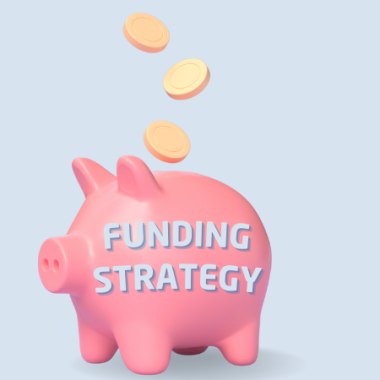Pricing is more than just a figure; it’s the strategic work that determines your profitability and distinguishes your business. Successful pricing is not competing on cost but in optimising the value delivered to your customers.
Profit: The Lifeline of Your Business
Profit isn’t just a number—it’s what keeps your business thriving, helping you deliver top-notch services without bending to every whim of the competition. With a smart pricing strategy, you’re not just sticking numbers on a tag; you’re paving the way for innovation and truly stand out customer experiences.
However, it’s all too common to see businesses trip up here, setting prices based on gut feelings about what customers might pay, instead of diving into the real gold – genuine customer feedback.
When you tune into these insights and craft your pricing strategy around them, you’re setting yourself up for a real competitive advantage.
Customer Loyalty and Value Perception
Chasing customers who are just looking for the cheapest deal might seem like a good idea, but it’s a bit short-sighted. These bargain hunters will happily switch for the next best deal, and they can be tough customers to please.
Instead, it’s smarter to connect with those who see the value in quality. These customers are more likely to stick around because they understand and appreciate what you bring to the table, and they’re willing to pay for that extra worth.
Strategic Pricing Techniques
Premium Pricing Models: Want to bump up the value perception of your offerings? Consider rolling out a premium model. This is where you can really shine by adding exclusive features or services that go beyond the basics. For example, many software companies start customers on a basic plan but offer the chance to upgrade for fancier perks like advanced analytics or more customisation. It’s not just software, either—think about boutique hotels or luxury car services that provide those plush experiences customers can’t get just anywhere.
Price Differentiation: Stand out from the crowd by enhancing your products or services with features that your competitors can’t match. Take a local coffee shop that sends subscribers a new, specially curated blend each month. This isn’t just another cup of joe—it’s a unique coffee adventure, delivered right to their door. Such distinct offerings keep customers coming back for more, eager to see what’s next.
Regular Price Adjustments: The world’s always changing, and your prices might need to change with it to keep up with market trends and costs. Reviewing your prices regularly doesn’t always mean you have to increase them. Sometimes, it’s about adjusting your strategy to tap into new opportunities or meet market demand differently.
Getting to Grips with Pricing Psychology
Getting the price right is all about understanding what’s inside your customer’s head. When something is priced higher, people often see it as better quality. But you’ve got to show them why it’s worth more. Take a handmade furniture shop, for example. They’re not just selling wood assembled into a shape; they’re selling craftsmanship, the choice of sustainable materials, and the chance to own something uniquely tailored to your taste.
Knowing Your Customer: Understanding your ideal customer is key. You need to tailor your offers to meet their expectations so well that it feels almost silly for them to say no. For instance, if you’re marketing a high-end home espresso machine, target coffee enthusiasts who appreciate quality and wouldn’t hesitate to invest in a superior coffee experience at home. Your offer needs to resonate so deeply with their love of coffee that the price becomes a secondary consideration to the value they perceive.
Credibility and Who’s Selling: The person behind the product significantly influences customer trust and willingness to pay. A doctor, for example, selling nutritional supplements carries more credibility than a random person off the street. This trust, built on qualifications and professional experience, allows for higher pricing.
The Importance of Context: The environment where your products are sold plays a crucial role in how pricing is perceived. For example, shoppers might not pay £30 for a pair of knickers at Tesco, but they wouldn’t think twice about spending that amount at Victoria’s Secret.
Selling organic, locally sourced produce at a farmer’s market can fetch a premium price compared to the same goods in a discount grocery store. The context of an upscale, health-conscious market aligns with the values of customers willing to pay more for organic products.
Matching Business Appearance and Operations: How and where you conduct your business should align with your pricing strategy. If you’re charging premium prices, every aspect of your customer’s experience should reflect that—from the quality of your website and the customer service you offer to the physical presentation of your store or office. For example, a luxury jewelry store benefits from an elegant storefront in a prestigious area, with a well-designed, secure online shopping experience. This coherence between location, presentation, and product quality makes customers more comfortable with premium pricing, seeing it as part of a luxurious experience.
Pricing Strategies to Consider
Freemium Models & Free Trials: Perfect for digital businesses! Think of it like offering a sneak peek of the best bits for free. It’s enough to get them eager for more, which can really increase up your sign-ups. Once they’re hooked on what you offer, impress them with irresistible paid extras. This strategy not only increases the initial customer engagement but also sets the stage for more committed, paying users once they’ve seen the value firsthand.
Dynamic Pricing: It’s a big hit with airlines and hotels. Prices shift based on how many people are booking and what the market’s doing. It means you can make the most during busy times and keep things ticking over when it’s quieter.
Bundling: Packing products or services together can make customers feel like they’re getting a great deal, nudging them to buy more than they planned. Imagine selling fitness gear; throw in a treadmill, weights, and a mat as a single package deal, and it’s easier than selling them all separately.
Money Mindset & Overcoming Pricing Barriers
One of the most significant hurdles to implementing higher pricing often isn’t found in the market or in customer feedback, but within us. Our self-esteem and personal beliefs about money can profoundly influence how we price our services or products.
Many business owners struggle with the idea of charging more because of deep-seated beliefs that they might not be worth it, or fears of losing customers. This mindset stems from a lack of confidence in either the value of the product or service or in their own worth as providers. The critical step is to recognise that by setting prices that truly reflect the quality and value of your offerings, you are affirming their worth and your own.
Reflect on Your Value: Take time to thoroughly assess the value you provide to your customers. Consider the benefits, results, and the unique solutions your products or services offer. Writing these down can help solidify your understanding and confidence in what you are offering.
Seek Feedback: Regularly gather and review feedback from your customers that highlights what they appreciate about your product or service. Positive customer testimonials can boost your self-esteem and help you see the value from your customers’ perspectives.
Educate Yourself: Understanding the basics of pricing strategies, market value, and consumer psychology can equip you with the tools to set more confident prices. Consider attending workshops, seminars, or even online courses focused on pricing and value creation.
Visualise Success: Visualisation techniques can be powerful. Imagine interacting with a customer who is happy to pay your asking price and benefits significantly from what you’ve provided. Mental rehearsals can reinforce the belief in the value of your offerings and your right to charge appropriately.
Consult with Mentors: Sometimes, talking through your pricing strategy with a business advisor can provide new insights and reinforce your confidence. They can offer an objective view of your pricing, free from the emotional ties you might have.
Crafting the perfect pricing plan is a bit like making art—it takes a deep understanding of your market, your customers, and what your business stands for.
Unlock Your Pricing Potential with Duport’s Free Tool
Understanding the maths behind your pricing is crucial for achieving profit. That’s why we’ve created a handy tool exclusively for Duport customers. This free resource helps you calculate your ideal pricing based on the specific profit goals you have set for your business. It’s straightforward, user-friendly, and designed to take the guesswork out of your pricing strategy.
Get Started with Duport—empower your business with the tools and support to thrive!







